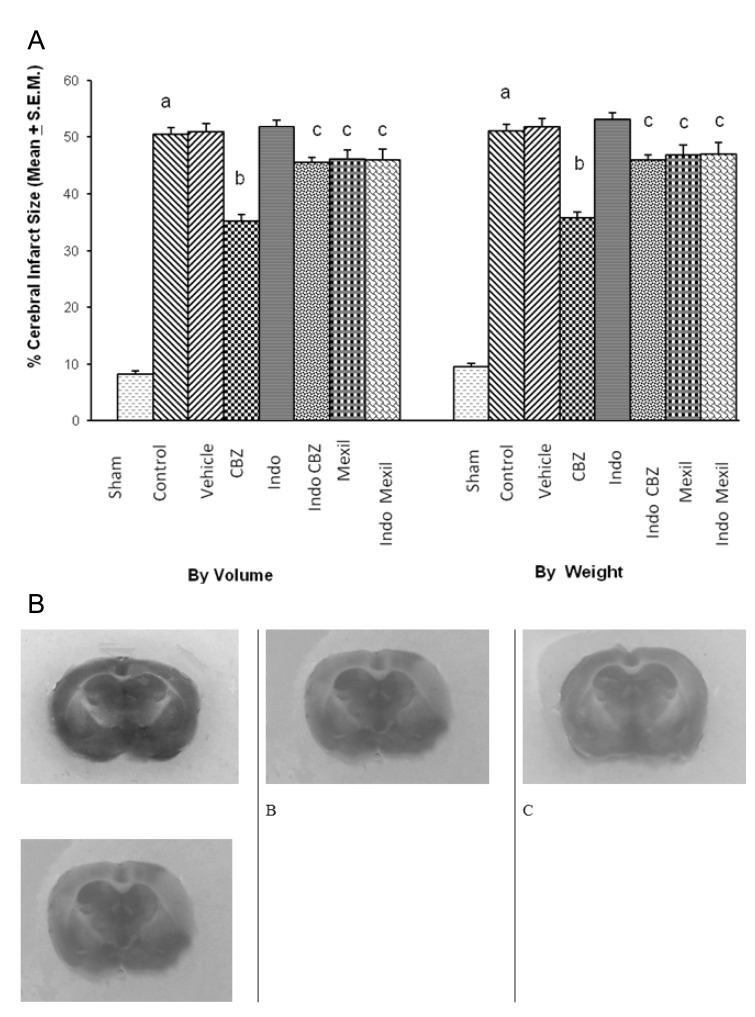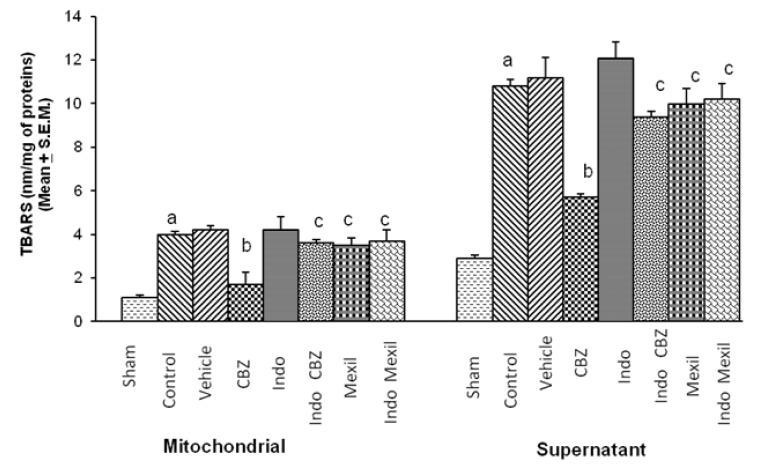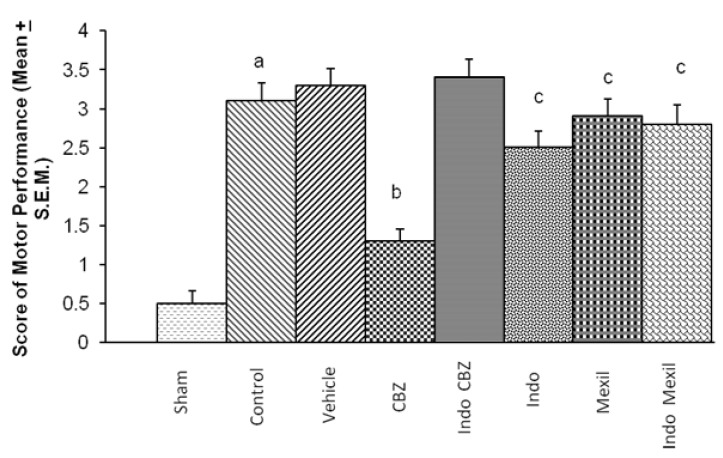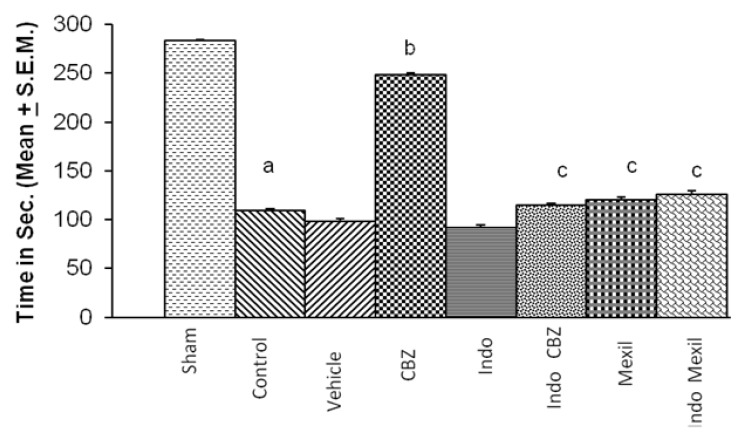1. Phipps MA. Assessment of neurologic deficits in stroke. Acutecare and rehabilitation implications. Nurs Clin North Am. 1991; 26:957–970. PMID:
1945948.
2. Mirbagheri MM, Tsao C, Rymer WZ. Natural history of neuromuscular properties after stroke: a longitudinal study. J Neurol Neurosurg Psychiatry. 2009; 80:1212–1217. PMID:
19060025.

3. Baulieu EE. Neurosteroids: of the nervous system, by the nervous system, for the nervous system. Recent Prog Horm Res. 1997; 52:1–32. PMID:
9238846.
4. Compagnone NA, Mellon SH. Neurosteroids: biosynthesis and function of these novel neuromodulators. Front Neuroendocrinol. 2000; 21:1–56. PMID:
10662535.

5. Mellon SH, Griffin LD. Neurosteroids: biochemistry and clinical significance. Trends Endocrinol Metab. 2002; 13:35–43. PMID:
11750861.

6. Weaver CE Jr, Marek P, Park-Chung M, Tam SW, Farb DH. Neuroprotective activity of a new class of steroidal inhibitors of the N-methyl-D-aspartate receptor. Proc Natl Acad Sci U S A. 1997; 94:10450–10454. PMID:
9294231.

7. Leśkiewicz M, Budziszewska B, Basta-Kaim A, Zajac A, Kaciński M, Lasoń W. Effects of neurosteroids on neuronal survival: molecular basis and clinical perspectives. Acta Neurobiol Exp (Wars). 2006; 66:359–367. PMID:
17265696.
8. Camporez JP, Akamine EH, Davel AP, Franci CR, Rossoni LV, Carvalho CR. Dehydroepiandrosterone protects against oxidative stress-induced endothelial dysfunction in ovariectomized rats. J Physiol. 2011; 589:2585–2596. PMID:
21486789.

9. Wang JM, Singh C, Liu L, Irwin RW, Chen S, Chung EJ, Thompson RF, Brinton RD. Allopregnanolone reverses neurogenic and cognitive deficits in mouse model of Alzheimer's disease. Proc Natl Acad Sci U S A. 2010; 107:6498–6503. PMID:
20231471.

10. Frye CA, McCormick CM. The neurosteroid, 3alpha-androstanediol, prevents inhibitory avoidance deficits and pyknotic cells in the granule layer of the dentate gyrus induced by adrenalectomy in rats. Brain Res. 2000; 855:166–170. PMID:
10650145.
11. Pirog EC, Collins DC. 3 Alpha-hydroxysteroid dehydrogenase activity in rat liver and skin. Steroids. 1994; 59:259–264. PMID:
8079380.
12. Griffin LD, Mellon SH. Selective serotonin reuptake inhibitors directly alter activity of neurosteroidogenic enzymes. Proc Natl Acad Sci U S A. 1999; 96:13512–13517. PMID:
10557352.

13. Jaworska-Feil L, Budziszewska B, Leśkiewicz M, Lasoń W. Effects of some centrally active drugs on the allopregnanolone synthesis in rat brain. Pol J Pharmacol. 2000; 52:359–365. PMID:
11334228.
14. Marx CE. Neurosteroids and psychiatric disorders. Psychiatric Times;2001.
15. Hough CJ, Irwin RP, Gao XM, Rogawski MA, Chuang DM. Carbamazepine inhibition of N-methyl-D-aspartate-evoked calcium influx in rat cerebellar granule cells. J Pharmacol Exp Ther. 1996; 276:143–149. PMID:
8558424.
16. Serra M, Littera M, Pisu MG, Muggironi M, Purdy RH, Biggio G. Steroidogenesis in rat brain induced by short- and long-term administration of carbamazepine. Neuropharmacology. 2000; 39:2448–2456. PMID:
10974329.

17. Pan BS, Manji HK, Schmidt ME, Potter WZ. Carbamazepine increased pregnenolone synthesis blocked by peripheral type benzodiazepine receptor antagonist. Depression. 1995; 3:267–272.

18. Griffin LD, Mellon SH. Biosynthesis of the neurosteroid 3 alpha-hydroxy-4-pregnen-20-one (3 alpha hp), a specific inhibitor of FSH release. Endocrinology. 2001; 142:4617–4622. PMID:
11606426.
19. Monk JP, Brogden RN. Mexiletine. A review of its pharmacodynamic and pharmacokinetic properties, and therapeutic use in the treatment of arrhythmias. Drugs. 1990; 40:374–411. PMID:
2226221.
20. Ogawa K, Takasu K, Shinohara S, Yoneda Y, Kato A. Pharmacological characterization of lysophosphatidic acid-induced pain with clinically relevant neuropathic pain drugs. Eur J Pain. 2012; 16:994–1004. PMID:
22337641.

21. Rehni AK, Singh N. Role of phosphoinositide 3-kinase in ischemic postconditioning-induced attenuation of cerebral ischemia-evoked behavioral deficits in mice. Pharmacol Rep. 2007; 59:192–198. PMID:
17556797.
22. Heinel LA, Rubin S, Rosenwasser RH, Vasthare US, Tuma RF. Leukocyte involvement in cerebral infarct generation after ischemia and reperfusion. Brain Res Bull. 1994; 34:137–141. PMID:
8044688.

23. Pentón-Rol G, Marín-Prida J, Pardo-Andreu G, Martínez-Sánchez G, Acosta-Medina EF, Valdivia-Acosta A, Lagumersindez-Denis N, Rodríguez-Jiménez E, Llópiz-Arzuaga A, López-Saura PA, Guillén-Nieto G, Pentón-Arias E. C-Phycocyanin is neuroprotective against global cerebral ischemia/reperfusion injury in gerbils. Brain Res Bull. 2011; 86:42–52. PMID:
21669260.

24. Yagi K. Assay for serum lipid peroxide level and its clinical significance. In : Yagi K, editor. Lipid Peroxides in Biology and Medicine. New York: Academic Press Inc;1982. p. 223–242.
25. Lowry OH, Rosebrough NJ, Farr AL, Randall RJ. Protein measurement with the folin phenol reagent. J Biol Chem. 1951; 193:265–275. PMID:
14907713.

26. Gupta R, Singh M, Sharma A. Neuroprotective effect of antioxidants on ischaemia and reperfusion-induced cerebral injury. Pharmacol Res. 2003; 48:209–215. PMID:
12798674.

27. Dunham NW, Miya TS. A note on a simple apparatus for detecting neurological deficit in rats and mice. J Am Pharm Assoc Am Pharm Assoc (Baltim). 1957; 46:208–209. PMID:
13502156.
28. Himori N, Watanabe H, Akaike N, Kurasawa M, Itoh J, Tanaka Y. Cerebral ischemia model with conscious mice. Involvement of NMDA receptor activation and derangement of learning and memory ability. J Pharmacol Methods. 1990; 23:311–327. PMID:
2164622.
29. Wong AM, Hodges H, Horsburgh K. Neural stem cell grafts reduce the extent of neuronal damage in a mouse model of global ischaemia. Brain Res. 2005; 1063:140–150. PMID:
16289485.

30. Gamelin E, Gamelin L, Bossi L, Quasthoff S. Clinical aspects and molecular basis of oxaliplatin neurotoxicity: current management and development of preventive measures. Semin Oncol. 2002; 29(5 Suppl 15):21–33. PMID:
12422305.

31. Gursoy E, Cardounel A, Kalimi M. Pregnenolone protects mouse hippocampal (HT-22) cells against glutamate and amyloid beta protein toxicity. Neurochem Res. 2001; 26:15–21. PMID:
11358277.
32. Borowicz KK, Piskorska B, Banach M, Czuczwar SJ. Neuroprotective actions of neurosteroids. Front Endocrinol (Lausanne). 2011; 2:50. PMID:
22649375.

33. Morrow AL, Pace JR, Purdy RH, Paul SM. Characterization of steroid interactions with gamma-aminobutyric acid receptorgated chloride ion channels: evidence for multiple steroid recognition sites. Mol Pharmacol. 1990; 37:263–270. PMID:
1689453.
34. Frank C, Sagratella S. Neuroprotective effects of allopregnenolone on hippocampal irreversible neurotoxicity in vitro. Prog Neuropsychopharmacol Biol Psychiatry. 2000; 24:1117–1126. PMID:
11131176.

35. Fukabori Y, Takezawa Y, Yamanaka H, Honma S. Inhibition of 3 alpha-hydroxysteroid oxidoreductase and 5 alpha-reductase activity by antiandrogens and indomethacin in the rat prostate. Prostate. 1992; 21:255–267. PMID:
1281319.
36. Ates O, Cayli SR, Gurses I, Turkoz Y, Tarim O, Cakir CO, Kocak A. Comparative neuroprotective effect of sodium channel blockers after experimental spinal cord injury. J Clin Neurosci. 2007; 14:658–665. PMID:
17532502.

37. Dolga AM, Terpolilli N, Kepura F, Nijholt IM, Knaus HG, DOrsi B, Prehn JH, Eisel UL, Plant T, Plesnila N, Culmsee C. KCa2 channels activation prevents [Ca
2+]
i deregulation and reduces neuronal death following glutamate toxicity and cerebral ischemia. Cell Death Dis. 2011; 2:e147. PMID:
21509037.
38. Lee MJ, Kee KH, Suh CH, Lim SC, Oh SH. Capsaicin-induced apoptosis is regulated by endoplasmic reticulum stress- and calpain-mediated mitochondrial cell death pathways. Toxicology. 2009; 264:205–214. PMID:
19699254.

39. White BC, Sullivan JM, DeGracia DJ, O'Neil BJ, Neumar RW, Grossman LI, Rafols JA, Krause GS. Brain ischemia and reperfusion: molecular mechanisms of neuronal injury. J Neurol Sci. 2000; 179:1–33. PMID:
11054482.

40. Cross CE, Halliwell B, Borish ET, Pryor WA, Ames BN, Saul RL, McCord JM, Harman D. Oxygen radicals and human disease. Ann Intern Med. 1987; 107:526–545. PMID:
3307585.

41. Baker K, Marcus CB, Huffman K, Kruk H, Malfroy B, Doctrow SR. Synthetic combined superoxide dismutase/catalase mimetics are protective as a delayed treatment in a rat stroke model: a key role for reactive oxygen species in ischemic brain injury. J Pharmacol Exp Ther. 1998; 284:215–221. PMID:
9435181.
42. Halliwell B, Gutteridge JM. Oxygen toxicity, oxygen radicals, transition metals and disease. Biochem J. 1984; 219:1–14. PMID:
6326753.

43. Lukácová N, Gottlieb M, Marsala J. Lipid peroxidation and phospholipid composition in rat brain regions after ischemia and in early perfusion periods. Arch Ital Biol. 1998; 136:167–180. PMID:
9645307.







 PDF
PDF ePub
ePub Citation
Citation Print
Print



 XML Download
XML Download